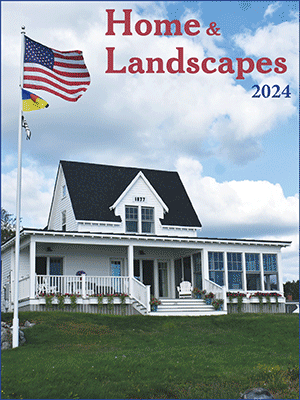Pedal plan for Twin Villages
When Damariscotta received grants to boost its sidewalks on Business Route 1 and Bristol Road in 2008, it made life a little easier for foot traffic.
Now, the plan is to make things run smoother for pedal traffic.
Lincoln County Planner Robert Faunce spoke Oct. 1 at the Damariscotta Board of Selectmen meeting about forming a committee to study and implement a traffic plan that would benefit not only pedestrians, but cyclists, as well.
The board approved its support of the committee, 5-0, but did not name any of the two selectmen to the committee yet: four of the five selectmen (George Parker was the lone holdout) expressed interest in joining the committee.
Originally, Faunce wanted just one Damariscotta selectman to sit on the committee, which will be fully formed by the end of October.
The committee is expected to feature (in addition to the two Damariscotta board members) a representative from Newcastle's board of selectmen and citizens who bike and will likely be formed for approximately six months, Faunce said.
The goal is to revisit the pedestrian and bike plan, and make changes as they are needed.
“Damariscotta was successful back in 2008 in getting funding for its pedestrian and bike plan,” he said. “The town was very successful in implementing a plan for its sidewalks on Route 1B and the Bristol Road. Now, we'd like to add in an update that includes Newcastle and puts more of an emphasis on the bike part (of that plan).”
Faunce said that when the original bike and pedestrian plan was developed, it was during a busy period at the town offices. While the sidewalks were funded (the Bristol Road project is still awaiting a start date) not enough attention was given to those commuters on two wheels, Faunce said.
“We want to add not only road cyclists to the committee, but get a casual biker there, too,” he said. “We still have a lot of good data from 2008, but we would still look to create a digital survey.”
In recent years, Faunce said he had noticed a negative trend when it comes to funding public works projects. While no grants were mentioned at the meeting, the town had some success when it applied for grants in 2008, Faunce said.
“What I've seen, is that the 80-20 (80 percent of funding from the state government, 20 percent from the town) splits aren't there anymore,” he said. “Now, it's 50-50.”
But, the higher upfront cost to town has both advantages and disadvantages, Faunce said.
“When it's 50-50 there's a great chance the DOT is going to pick it up,” he said. “When it's 50-50, the town has contributed more, so there's a great chance the project will get funded.
“My problem, is that the 50-50 split favors communities in Southern Maine. Council governments have no problem securing the funding — your Cumberlands, Falmouths, Yarmouths won't have a problem coming up with the money.”
Regardless of how much money either side puts in, the mission and the timetable will remain largely the same, Faunce said.
Event Date
Address
United States
























